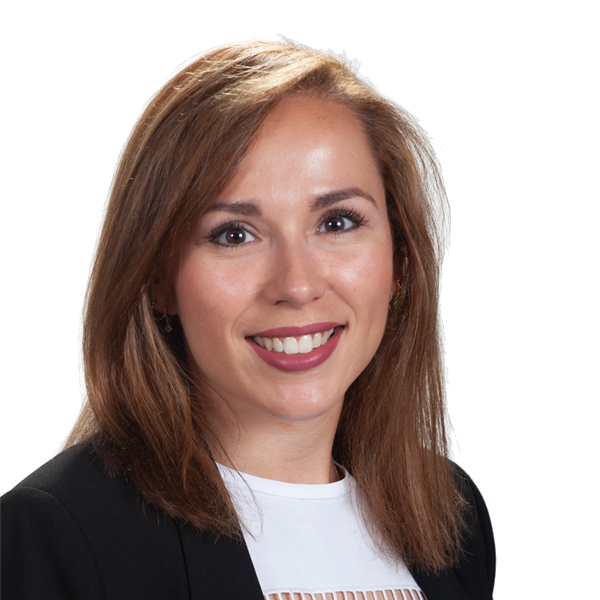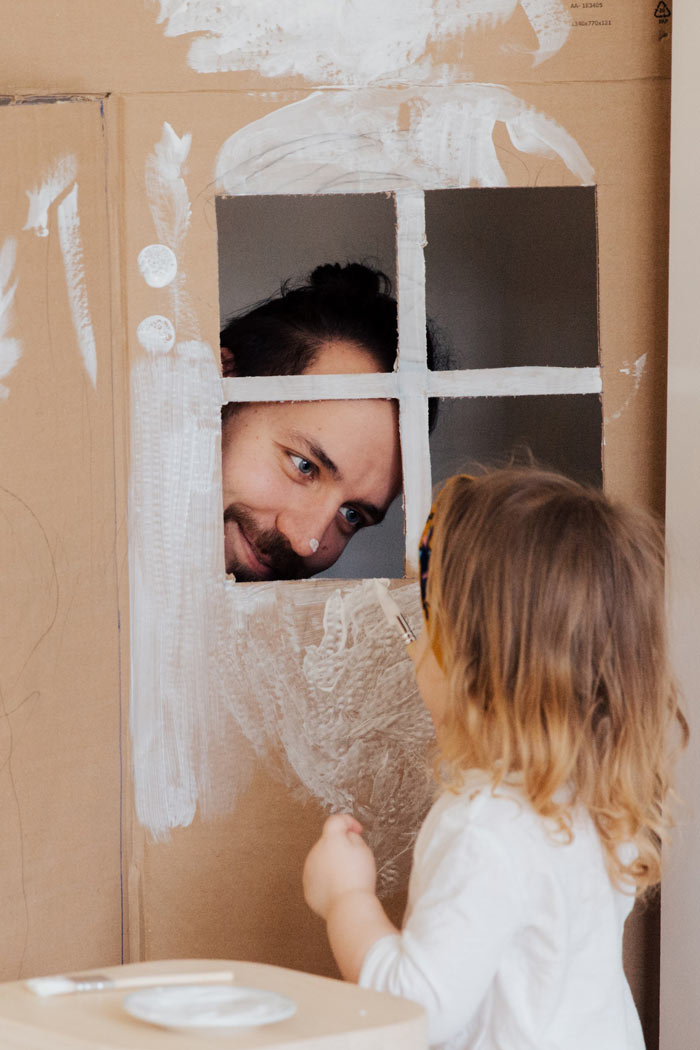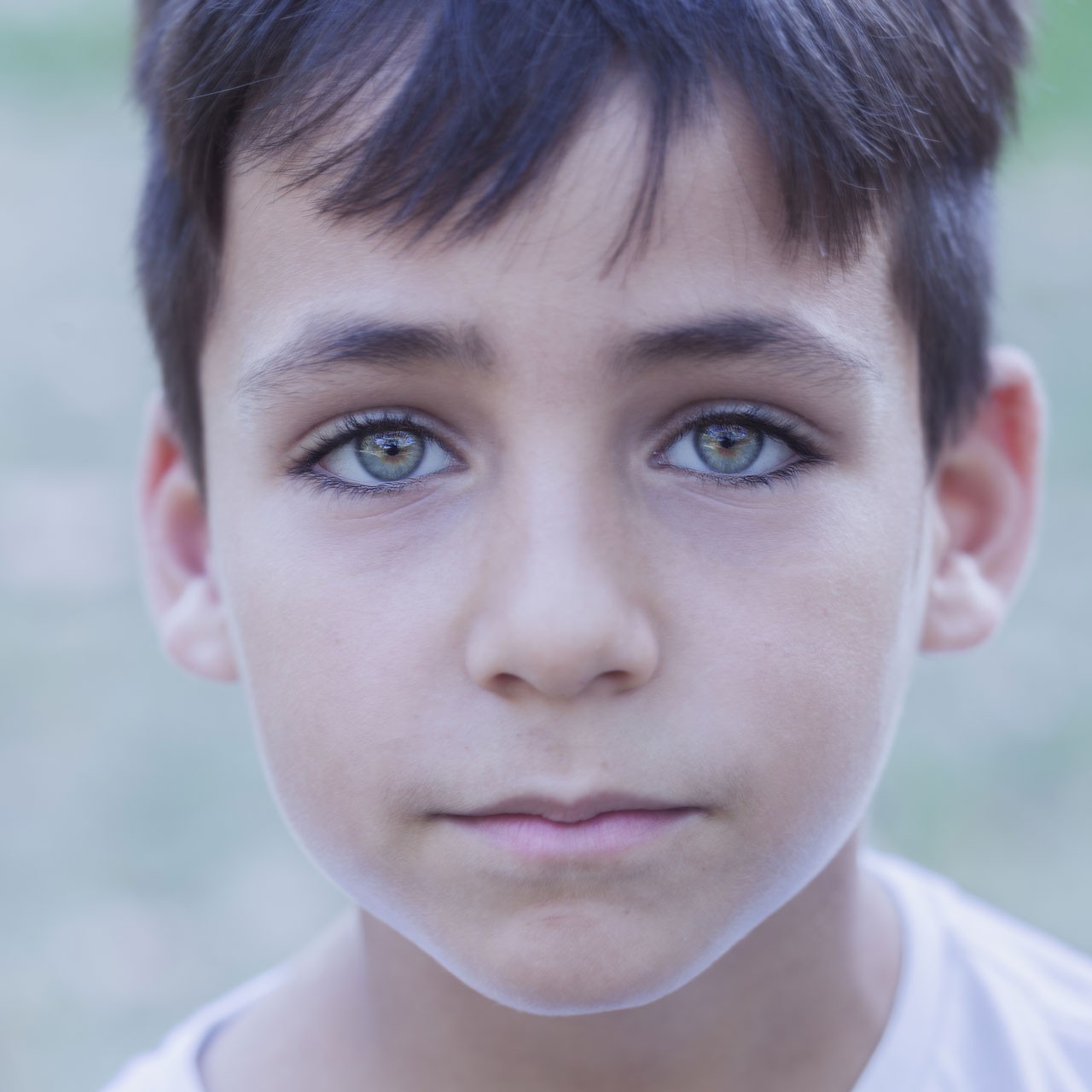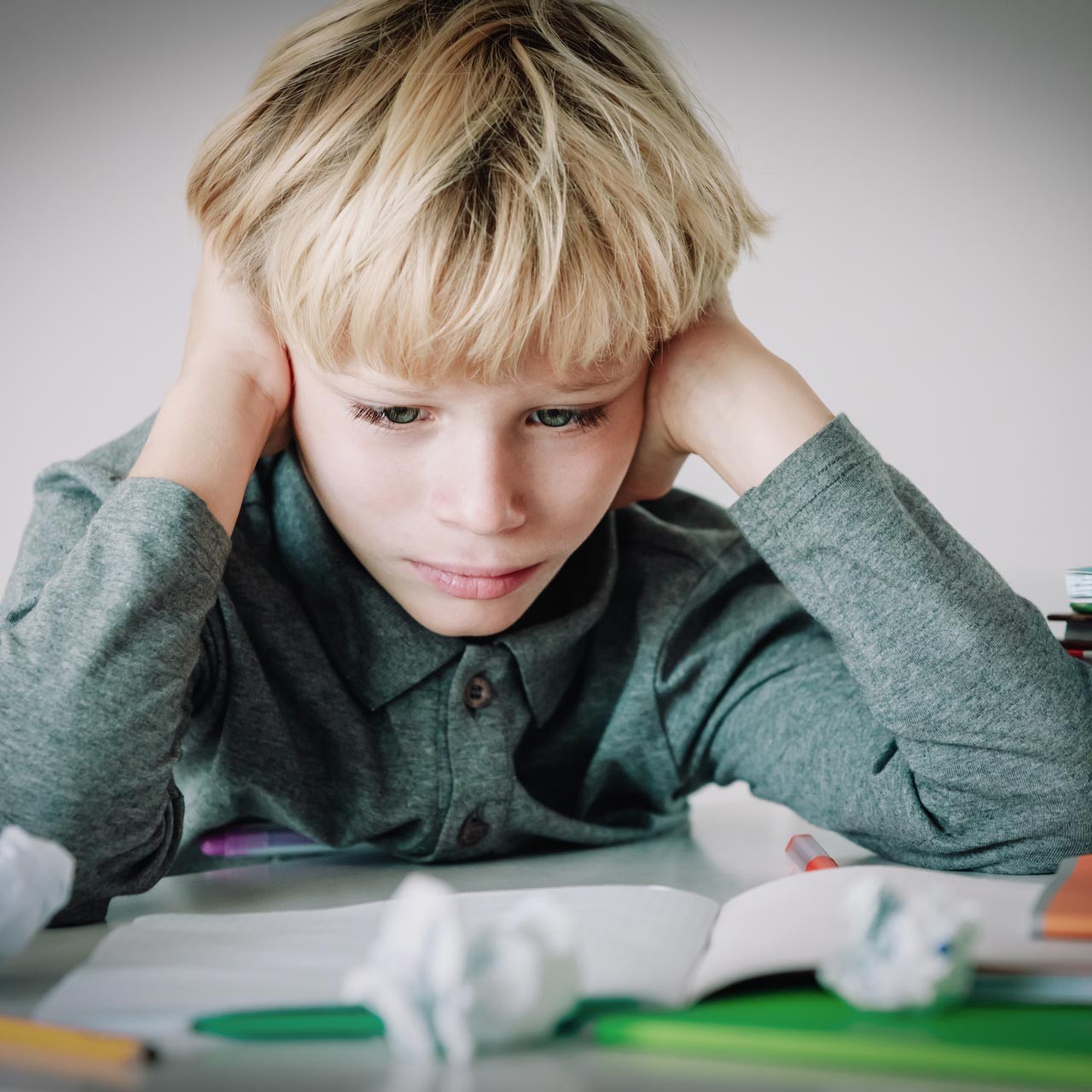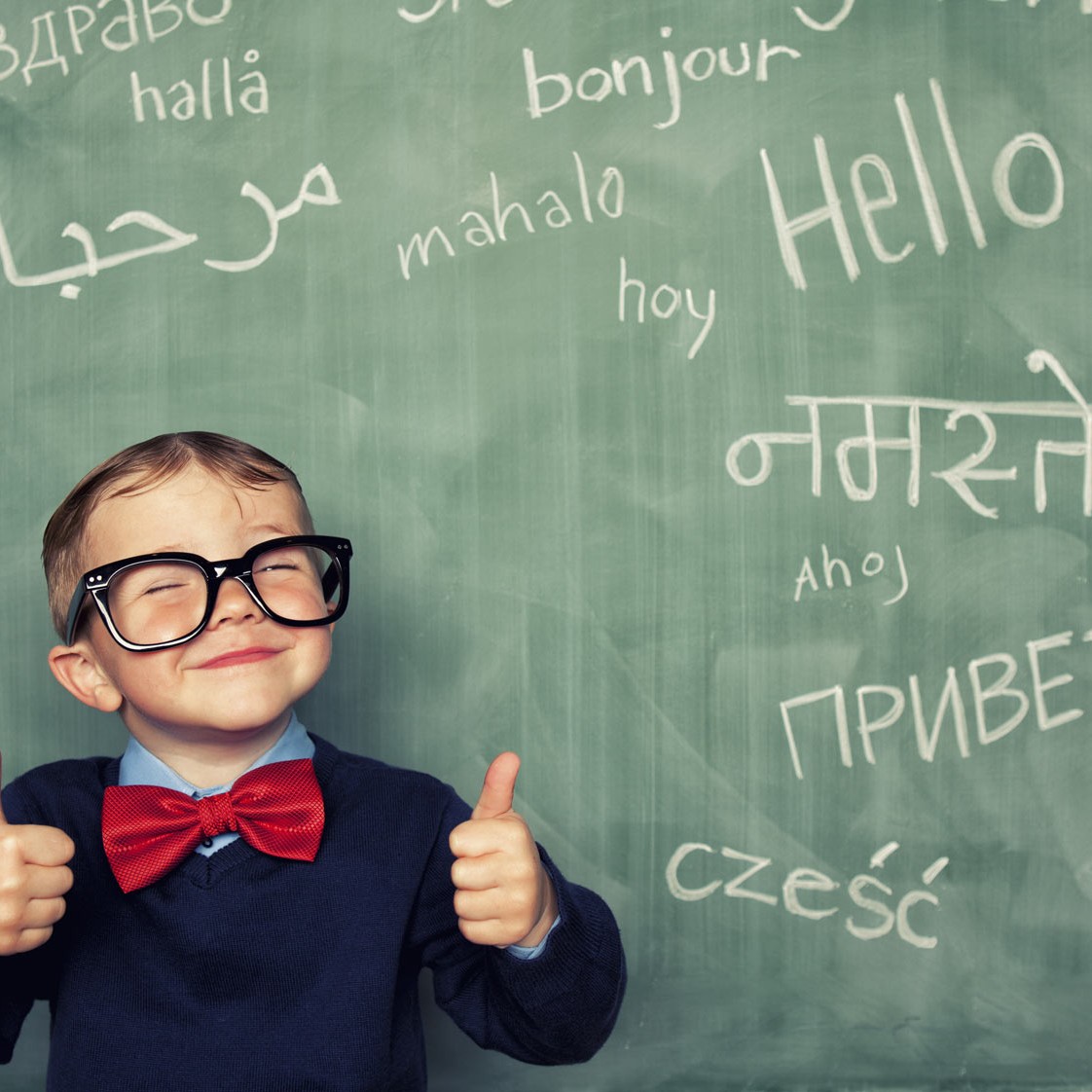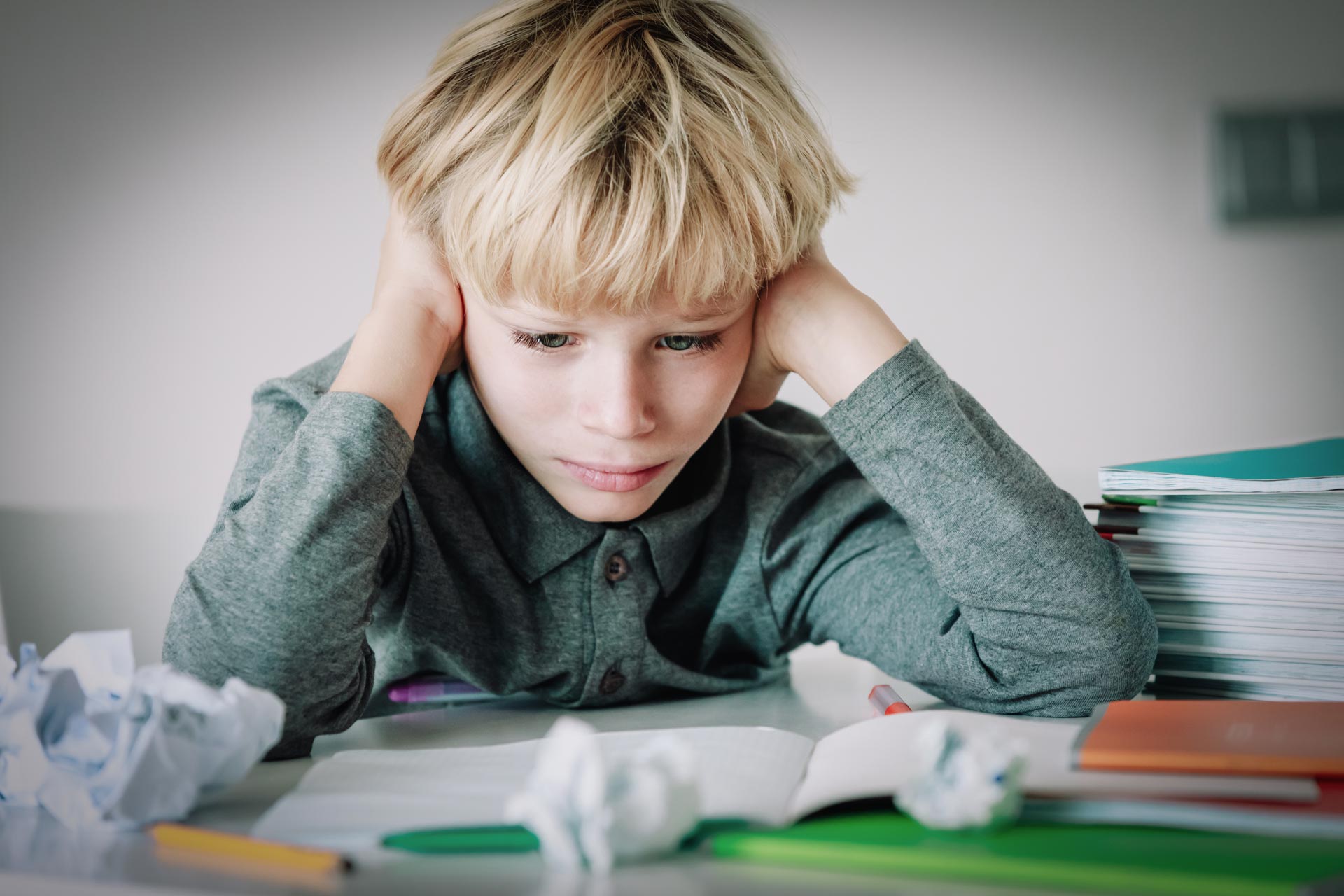Coach de estudio en Sinews
Division of Psychology, Psychotherapy and Coaching
Neuropsychologist
Study coach
Coordinator of the specialised services of psycho-pedagogical support and speech therapy at the school
Languages: English and Spanish
Study coach at Sinews
This service is aimed towards adolescents and adults who feel frustrated with their academic performance and need to optimize their results:
- Teenagers who need a little boost at specific times of the academic year, such as testing season.
- Students preparing for IGCSE, EvAU, A-levels or IBs.
- University students
- Examination candidates
What will we learn?
- Effective study skills
- How to extract main ideas
- How to make a good outline
- Mnemonic strategies
- How to study a topic
- How to prepare for a subject depending on the type of examination
- Time management skills and appropriate task management
- How to increase performance on exams
- Build up a study routine.
- Reduce procrastination.
- Learn to manage the emotions related to exams: nerves, blank mind, anticipatory thoughts, etc.
The rate is 78€/session and sessions will last for one hour.
PACT Therapy
PACT Therapy
PACT- Pediatric Autism Communication Therapy, a specific communication and language therapy for children with ASD or social communication needs
What is Autism Spectrum Disorder?
Autism spectrum disorder (ASD) is a complex developmental condition involving persistent challenges with social communication, restricted interests, and repetitive behavior. While autism is considered a lifelong disorder, the degree of impairment in functioning because of these challenges varies between individuals with autism.
Regarding the impairment in communication, within the spectrum, we can find people who have not developed oral language and do not make basic requests and people who, for example, with fluent oral language development, are not able to adequately use polite formulas. There is a percentage of people with ASD who do not develop oral language or do so only partially, being necessary to provide specialized intervention and tools the person can use to communicate. The evolution and prognosis of people with ASD are directly related to the type of care received and, above all, the moment at which care is initiated. A person who receives individualized and specialized treatment, based on scientific evidence, from a very early age will have more possibilities to develop and have a better quality of life. ( More information: https://www.sinews.es/en/trastorno-del-espectro-autistay-dificultades-del-lenguaje/).
What is PACT?
PACT (Pediatric Autism Communication Therapy) is a specific communication and language therapy for children with ASD or social communication needs. It is based on videofeedback and is designed for parents or direct caregivers of children with difficulties in the social communication field. It can be carried out with children between the ages of 2 and 11 years, from those who use few or no words to those who use sentences to communicate.
Video feedback allows parents to recognize the communication of the child with ASD and discover new ways to successfully interact. The certified PACT therapist works hand-in-hand with family members or caregivers, supporting and empowering them with improved skills, and helping them to integrate PACT techniques into daily life routines to create sustained change over time.
What does PACT do?
- It helps parents understand how they can communicate more effectively with their children.
- It supports parents in observing the child's interests and motivations, moments of joy, and exchange of interactions, which may go unnoticed in day-to-day interactions..
- Working in the child's environment, PACT brings the best individual support to the child's daily routines.
- Parents learn individual strategies for developing social and communicative responses in their children, as well as the use of supportive language strategies while working through the different stages of PACT.
- The PACT therapist helps parents identify step-by-step goals by following the PACT manual.
- By reviewing video clips, the professional will help parents identify their child's communication cues and interaction moments and understand how best to respond to help him or her initiate communication more frequently and skillfully.
- Over time, PACT progresses to the point of helping families identify strategies to help their children develop meaningful communication.
- In addition, children who have developed oral language can also receive support to further develop conversational skills.
Whom is it intended for?
PACT is designed for children who show signs of autism or who have received a diagnosis of autism, as well as for those who present needs in the area of communication and social interactions. As mentioned above, children with Autism Spectrum Disorder usually present difficulties in communication and building social relationships as well as restricted and repetitive interests. PACT is an intervention focused on improving communication and language, with a solid scientific basis that has been shown to significantly improve the mentioned difficulties. In addition, PACT focuses on children’s strengths and individual potential, rather than normalizing or masking atypical behavior. Studies show that the progress achieved is sustained for up to six years.

PACT is designed to intervene in the communication and social interaction area
How is it administered? Where? How long does it take?
PACT can be delivered both in person and online. The PACT intervention involves individual sessions of approximately one hour in duration, every two weeks, with half an hour of daily practice between sessions. In total, it is estimated that between 12 and 18 sessions are needed to complete the intervention. Subsequently, maintenance sessions are offered to generalize the skills achieved in daily routines or in different contexts.
How is it carried out?
First, the therapist conducts an evaluation of the child’s language level and social and communication skills in order to measure the evolution, progress, and success of the intervention. A meeting is held with the family members to discuss the child’s development and especially to determine the child’s current needs.
Subsequently, each PACT session is conducted as follows:
- The therapist records a short video (10 minutes) of the parents and child interacting together. If receiving PACT online, this video should be recorded by the parents at home and sent to the therapist prior to the session.
- Parents and therapist watch the video together and select and preview clips from the video to identify and discuss the best strategies to support the child's communication. The goal is to identify positive moments and describe the strategies that work best for each individual child.
- Finally, specific and individualized objectives are set to be practiced during the daily half-hour until the next session.
- At each session, video clips are reviewed, progress is identified and new goals are set for daily practice.
What is the difference between PACT and the ImPACT project?
- To avoid confusion, PACT is different from another similarly named intervention called "Project ImPACT". These two interventions have very different theoretical backgrounds and working methods, as well as different evidence of effectiveness.
- Many interventions for the ASD population may seem similar, but PACT has some distinguishing features.
- First, it is the only intervention that uses videofeedback with parents and other caregivers and uses it within a modern model based on developmental theory, to optimize the child's social communication environment.
- Second, it is the only intervention in this field that has demonstrated sustained long-term efficacy in clinical trials in terms of improved outcomes and maintenance for six years after the end of the intervention.
- The UK National Institute for Health and Care Excellence (NICE) reviewed interventions in ASD in 2014/21 and only found that PACT and one other intervention (JASPER) had good enough evidence to support its recommendation.
Can it be combined with other interventions?
PACT can be combined with other interventions. As mentioned, PACT is designed to intervene in the communication and social interaction area. Children with ASD often have other needs related to learning, sleep, feeding, and behavior, and consequently need the support of other professionals, such as psychologists or psychiatrists.
What happens when PACT is completed?
After the PACT intervention has been completed, parents may be offered additional sessions or continue with other interventions that may meet their child’s needs at that time. Other areas of intervention may need to be explored or speech therapy support may need to be continued.
Early stimulation activity for parents and their children from 0 to 30 months, in English & Spanish
PRESENTIAL GROUP ACTIVITY
Early stimulation activity for parents and their children from 0 to 30 months, in English & Spanish
Play, dance and make music! Babies will enhance their physical, cognitive and social development through exploration and play. You will have guided quality time, to strengthen safe attachment between your baby and you.
About the psychologist:
Camila has worked in a multidisciplinary center specialized in early stimulation of newborn babies up to 4 year olds. Besides from being a General Health Psychologist with a post graduate degree in child and adolescents psychology, Camila has a minor degree in acting. This helps her create a joyful atmosphere, connecting through expressions and music with babies and parents. In her work experience, Camila has detected and treated neurodevelopment difficulties and disorders.
Duration:
1,5 hour per week
Age:
Group 1: Newborn to crawling babies (0-9 months)
Group 2: Toddlers (10 – 30 months)
Starting date:
Thursday, 2nd March, 2023
Language:
Language will be adapted to the group’s needs. The psychologist is bilingual (Spanish and English)
Need to bring:
A blanket for group 1
Goals
- Enjoy activities for each developmental stage. Encouraging children to achieve specific milestones at their own pace. We are going to work on:
- Gross and fine motor skills
- Balance to facilitate sitting, pulling up to stand, and dynamic balance that helps with those first little steps
- Attention and cognitive development
- Sense of rhythm and vocalization to support the language and communication skills
- Development of all the senses to encourage curiosity and exploration
- Socialization
- Proprioception that helps develop space awareness and to regulate the vital functions and emotions.
- Support the development of safe attachment between babies and their parents
- Provide a safe space where expat parents of 0 to 30 months children may share their experiences and mutual support
- Encourage social networking between parents in the similar situation of living abroad
- Provide support of a professional specialist in early intervention who can solve the doubts and accompany you through the challenges of maternity/paternity experience.
How the activity is structured:
- Welcome routine
- Opening activity (singing, dancing, connecting with parents, etc.)
- Theme activity (Textures/Balance/Attention/ Rhythm/Space awareness/movement, etc.)
- Between parents – circle talk
- Free exploration – sensorial/ messy play
- Closing activity (puppets, reading, calming exercises, etc.)
- Goodbye routine
There will be an entrance accessible for strollers available for the activity by calle Serrano Anguita 18 with an access to a changing table as well.
Where?
PRESENTIALAt Sinews MTI, calle Sagasta 16, bajo derecha
Nº of participants: 4-6 children with 1 caregiver.
When?

GROUP 1
Thursdays @ 10:00 - 11:30
GROUP 2
Thursdays @ 12:00 - 13:30
Price
40 euros per individual session (one parent). Prepaid by phone or credit card, booked at least 24 hours in advance.140 euros per 4-sessions pack (to be used before expiration date, 8 weeks after purchase).
Cancelation policy: Canceling 24 hours before the activity saves your 4-pack session for the next time.
CONNECTING PEOPLE, emotional intelligence and support group
PRESENTIAL GROUP THERAPY
CONNECTING PEOPLE, emotional intelligence and support group
Many of us have been struggling with the social deprivation the global pandemic is imposing.
For those suffering from stress, depression or other emotional difficulties, isolation makes it even harder to combat these symptoms. People with social anxiety or difficulties in creating healthy bonds are not able to practice or improve their abilities, or receive support from other people who are also going through challenging situations. That is why we have called this therapeutic group “Connecting people”, support and emotional intelligence in a group setting.
Why group therapy?
- We are social beings, and therefore, connecting with others has a deep positive influence on us.
- When we share our difficulties with others, we understand them more deeply, and we feel less lonely.
- An environment of respect, confidentiality and support can help us feel empowered and understood.
- We can only learn about creating bonds by doing it. In the group we will learn to respect others and be respected, to support and be supported, and to build and maintain healthy and valuable relationships.
Method:
The group is organized in 8 sessions and 4 modules:
In the first session, we will introduce ourselves, know more about what each one of the participants seeks from the group, and talk about the rules and our objectives.
In every session, the material used will be applied to real situations the participants face. The therapist will help the group feel safe creating a judgement-free, secure environment, where everyone can communicate, feel heard and connect better, exploring different ways of interacting.
Communication module (2 sessions): The different communication styles will be introduced, verbal and non-verbal communication, assertiveness and managing conflicts.
Self-confidence module (2 sessions): Being confident in oneself is key to effective communication. Negative emotions that arise during interactions as a result of insecurities or social anxiety, and how to conquer them in order to maintain healthy relationships will be addressed in this module.
Connection module (2 sessions): What is your weak point when you try to connect with others? Do you overthink what you said constantly? Do you avoid conflict and find it hard to say no? Do you find it hard to trust others? In this module, we will practice healthy ways of connecting with others.
Integration Module (2 sessions): This module will be useful to internalize the learned strategies, and for the participants to get to know each other better. We will talk about what it means to give and receive support, and how to find effective ways to communicate on a deeper level.
At the end of the 8 sessions, it will be decided if participants want to benefit from one or two extra sessions to strengthen any aspect of the material or have a closing/goodbye session.
Who is it for?
This group is dedicated to adolescents or young adults that feel they could improve their ability to connect with others, to Sinews clients that feel alone and isolated, to people who want to feel more at ease in a group… There are plenty of reasons why you might benefit from this group.
Adolescents group: 14 to 17 years old. Therapist: Inés Zulueta
Young adults group: 18 to 23 years old. Therapist: Marta Gray
Where?
PRESENTIALAt Sinews MTI, calle Sagasta 16, bajo derecha
It is an in person group, with every Covid prevention guaranty: hand washing, security distance, use of face masks and ventilated area. It will be for 5 people maximum and the therapist.
When?

Adolescents
Pending dates

Young adults
Pending dates
Price
25 euros per session and 175 euros for the 8 sessions if they are paid in advance (we offer one for free in that case).Psicología, Psiquiatría y Logopedia para Niños y Adolescentes
Psychology, Psychiatry y Speech Therapy for kids and adolescents
SINEWS offers a variety of mental health services for children and adolescents.
Psychology, Psychiatry y Speech Therapy for kids and adolescents
SINEWS offers a variety of mental health services for children and adolescents.
In SINEWS We have a multidisciplinary team of professionals from Psychiatry, Psychology and Speech Therapy dedicated to diagnosing difficulties and designing solutions for the most common problems in childhood and adolescence.
Childhood bilingualism
Childhood bilingualism
The brain of a bilingual child organizes and processes language differently than the brain of a monolingual child.
So when working with these children it is especially important to have specific knowledge about their reality: Childhood Bilingualism.
In SINEWS we have spent years working with MULTILINGUAL families from the international community, in which each parent has a different origin with a different language and culture. They have taught us what we know and have encouraged us to develop services tailored to their needs:
INDIVIDUAL ASSESSMENT AND TREATMENT for Spanish-English bilinguals
We have assessment tools that allow us to determine which language is dominant for a child in different areas and skills: listening, speaking, reading and writing … we know how bilingualism evolves and which language needs reinforcement in each area. These tools also help us to decide in which language to administer a psychoedcational evaluation if a child, for example, requires intelligence or aptitude testing.
Bilingual individuals are not immune to having problems with language: stuttering, difficulty with certain sounds … We offer an evaluation and speech therapy treatment plan that include both languages and prevent, whenever possible, eliminating one of the languages.
CONSULTATION SESSION FOR FAMILIES
Families often just want to clear up some doubts: When should a third language be introduced?, What should we do when one of our children suddenly stops responding to us in our native language despite being able to fully understand us?, In which language should our child start learning to read and write first?…
Initially, we will carry out a detailed analysis of the circumstances of each family through a comprehensive questionnaire sent by e-mail. This information would be taken to the appointment in our offices (how many languages, hours of exposure, people who speak to the child in each language, activities in each language, etc.)
The consultation, one hour, would resolve any doubts and a plan of action will be developed in order to achieve balanced multilingual development.
This service is available ON LINE (in Spanish). Click HERE for more information
FREE ONLINE CONSULTATIONS
If you have any specific question regarding your child’s bilingual or multilingual education, you have the chance to benefit from our experts. This is what the SINEWS BLOG is for. Send us your questions through the contact form and you will be able to read the response in our blog.
Speech therapy for children and adolescents
Speech therapy for children and adolescents
Speech therapy covers the areas of prevention, assessment, diagnosis and treatment of communication disorders.
Speech therapy covers the areas of prevention, assessment, diagnosis and treatment of communication disorders, which could be language disorders (expressive and receptive), speech production disorders, or communication disorders associated with problems with hearing or learning (reading and/or writing) in all age groups.
When should a speech therapist (speech language pathologist) be consulted?
In the case of young children or adolescents, whenever parents, doctors or teachers detect any problem in the areas mentioned above including reading problems, frequent written or spoken grammatical errors, stuttering, difficulties producing speech sounds accurately, the child doesn’t follow directions or appears lost when relating events to him/her, has difficulty describing events and encounters, unusual breathing patterns, hoarse/strained or an otherwise unusual voice.
What type of problems does a speech therapist treat?
- delayed acquisition of speech or language skills (children that begin speaking late)
- aphasias (difficulties speaking and/or comprehension)
- difficulties in producing speech sounds accurately in the first language
- stuttering (stammering) - Fluency disorders
- swallowing problems
- auditory processing disorder
- reading or writing problems
- voice disorders
- communication disorders associated with hearing loss
- Autism
- Cerebral palsy
- Neurological diseases (multiple sclerosis)
The professionals at Sinews understand the importance of creating assessment reports that provide instructions to family, and the other health care or education professionals in contact with our client.
Particularly, in the case of children, these reports are useful for teachers and enable them to take into account specific target areas of concern and offer appropriate Solutions for the classroom setting.
In SINEWS a clinical assessment can be provided regarding the difficulties that your child may have in a bilingual environment.
Child and Adolescent Psychiatrist Madrid
Child and Adolescent Psychiatrist Madrid
The services of Child and Adolescent Psychiatry are aimed at the detection, diagnosis, treatment and prevention of mental health problems in minors.
Child and Adolescent Psychiatrist Madrid
The services of Child and Adolescent Psychiatry are aimed at the detection, diagnosis, treatment and prevention of mental health problems in minors.
The mental health of children and adolescents depends on many factors: the environment, family, genetics, education, and social inclusion among others. In SINEWS we are concerned not only with the physical and mental development of kids, but also with their emotional well-being and their capacity to develop to their full potential without obstacles and complexes.
When something is wrong or you are concerned about your child, there is never a good reason not to consult a specialist (they will help to provide reassurance and a solution.)
A Pediatric and Adolescent Psychiatrist is a physician who is familiar with the normal development of children and who specializes in the diagnosis and treatment of problems that may arise throughout the process of maturation and growth.
A psychiatrist’s participation in the diagnosis helps to clarify what is normal and what is not, and can help to rule out anything physical that could be causing the problem (enuresis with a physical cause or problems of inattention caused by absence seizures, etc.) During this process, the specialist can determine whether it is necessary to carry out additional, complementary tests (brain imaging, blood or urine analysis, an electroencephalogram or genetic studies.)
The psychiatrist’s input in designing a treatment plan allows the parent to choose the best therapeutic option tailored to the needs of the child or adolescent: perhaps the assistance of an occupational therapist is required to improve motor skills, or individual psychotherapy to help resolve a harmful habit, or maybe a play group would be beneficial for social skills training.
In cases where medication is essential, the specialist will provide all the information the family needs to aid in making the decision to medicate or not, and will closely monitor its effectiveness. The specialist will determine a minimum, therapeutic dose and when medication should be terminated.
In SINEWS we are aware that children should, whenever possible, utilize their resources and strategies in order to solve their problems, and medication will never replace psychotherapy and the specific skills training necessary.
The childhood disorders that are most frequently diagnosed and treated in SINEWS are: ADHD, Depression and Anxiety, Autism Spectrum Disorders, Tic disorders, Compulsions and other obsessive-compulsive symptoms.
Psycho-educational testing
Kids
Psycho-educational testing
It's a diagnosis process where cognitive skills such as work memory, information processing speed and visuospatial skills are evaluated by the psychologist and language skills such as reading comprehension, auditory memory and written expression are evaluated by the speech therapist in order to reach a conclusion about the strengths and weaknesses of the child in his/her learning capacity.
The importance of a Psychoeducational Evaluation
What is a psychoeducational evaluation?
What is the process like?
1.
The first step involves an interview with the parents to gather information regarding the consulting reason and the difficulties perceived at school and at home. During this interview, the professional needs all the information the family can provide such as previous reports from other clinics or schools, medical reports in case of presenting some sort of condition that affects learning and even items such as teacher’s letters or notebooks. Why is it necessary? Evaluation makes sense in different cases. Some of the most common are school failure, evaluation of high capacities or the need for a regulated diagnosis to obtain curricular adaptations in exams. What type of tests does my child need? Only a professional such as a psychologist, a speech therapist or an educational psychologist can help us with this question. According to our child’s difficulties at school, one set of tests or another might be needed. Hence the importance of the initial interview and all the available information provided to the professional by the clients.
2.
The professional will study the information and locate the supposed problematic areas in order to decide which evaluation tools will be needed during the first stage. The professional will also decide which language is most appropriate to evaluate the different capacities.
3.
The family will receive a detailed budget which will include a list of the tests to be used in the evaluation.
4.
The administration of tests would be the next step. It would be advisable that the child comes in a morning timetable and rested. Two different sessions might be needed with short breaks. The total duration of this stage can be between 2 and 5 hours.
5.
The professional will proceed to correct the tests and the interpretation of results stage will begin. Correction and interpretation are the most technically demanding processes. The professional devotes, approximately, the same number of hours to this than to the administration of the tests. A very specific training is required to be able to do this together with a minimum period of 2 year experience with the tests and a proficient command of the language to be used in the evaluation.
6.
During this process, the need of complementing the evaluation with the participation of another professional may arise, in the case, for example, where there has been a possible language problem detected in the cognitive evaluation done by the psychologist. In this case the professional will inform the family of the need of the evaluation of the speech therapist. Both professionals would have a coordination meeting and a complementary evaluation process would begin with an interview between the speech therapist and the parents, after which another budget would be elaborated, to continue with the corresponding test administration.
7.
The report and the feedback session with the parents imply the end of the process. A report of this sort will include a detailed description of all the skills evaluated, a comparison of the scores obtained with the population of the same age, a description of disharmonies between abilities, diagnostic hypothesis and recommendations for the family and school. This process frequently implies between 2 and 5 hours of work depending on the number of tests and the complexity of the evaluation. In the case of having two professionals intervening, there will be a combined report in which the information is coordinated to reach a combined interpretation.
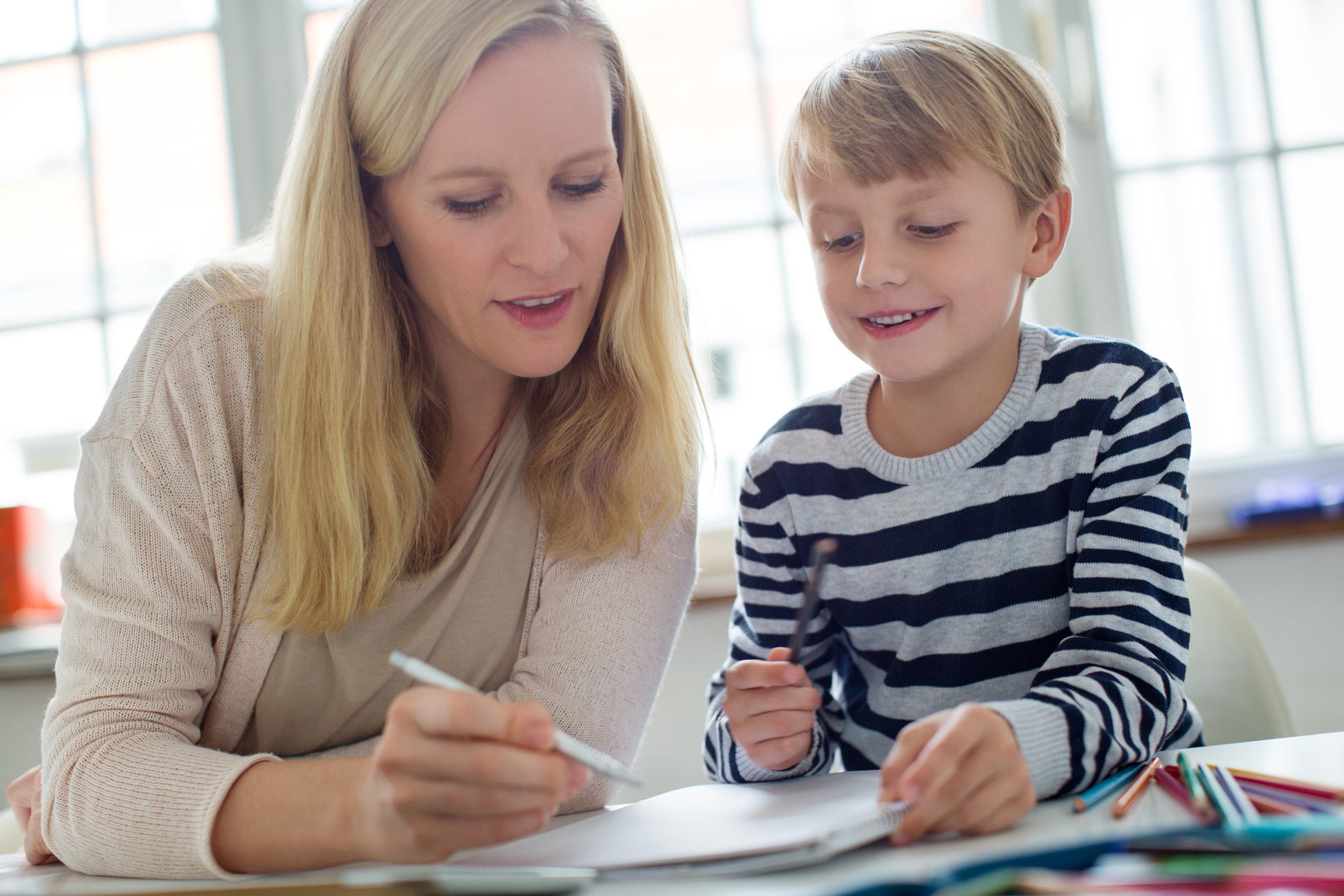
Advantages of having an evaluation
The evaluation will provide a lot of useful information:- At school, teachers can identify the difficulties and will have very specific guidelines to help our child
- When it comes to studying at home, we will get to know better which strengths can our child lean on to study more efficiently
- When facing official exams such as PAU, IB or academic tests in centres that include curricular adaptations, if their difficulties imply a disadvantage, they will benefit from the adaptations which will improve their opportunities
Psychotherapy
Kids
Psychotherapy
Psychotherapy with children/adolescents is used to treat a variety of problems.
Psychotherapy with children/adolescents is used to treat a variety of problems, such as anxiety disorders, depression, disruptive behavior disorders, as well as other common problems, including difficulties coping with divorce, problems in the parent-child relationship, sibling rivalry, adjustment or acculturation problems, and trauma-related issues.
At Sinews, we practice Cognitive-Behavioral Therapy (CBT) with children and adolescents, a problem-focused, interactive treatment method that has been empirically validated (through scientific research studies) and shown to be very effective when used to treat childhood mental health problems. While the number of sessions required depends upon the individual child and his/her problem, the average number of sessions usually falls between 6 and 12.
In some cases, a play therapy component may be added to the treatment sessions. Play therapy can be very helpful for children coping with loss, grief, and/or trauma, or for young children who have difficulty participating in the standard CBT sessions due to their age/developmental level.
In addition, psychotherapy for problems such as ADHD or defiant behavior often involves the parents more than the children. This is referred to as psychoeducation, and is used to help parents learn how to manage their child’s behavior outside of the therapy setting, or may simply be used to support and enhance parenting skills.


